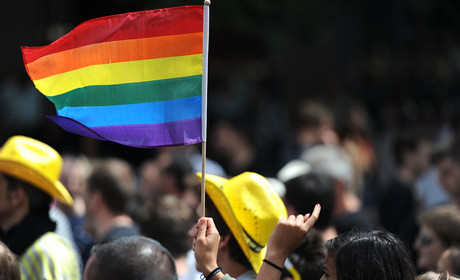
"Accurately representing this community is just as important and fundamental as covering any other community as a journalist."
Sara Trimble, a student at the Missouri School of Journalism, took to the stage at News Xchange yesterday together with her colleague Bryan Bumgardner to highlight why it is important for news organisations to improve their coverage of LGBT issues – drawing on a series of interviews with the community conducted in the last few months.
Using incorrect language such as the wrong pronouns when writing about transgender people, for example, prompts audiences to adopt the same practices.
"When we do this as reporters and journalists, we're failing to properly identify and represent this person," Trimble said.
"And when we do this, our readers inherit the same misconceptions and biases."
And while editorial decisions in this space might prove to be uncomfortable for some, it is important to accurately represent sources even if it might go against an editor's beliefs.
"When we put our own comfort ahead of our sources, we're perpetuating stereotypes," she said.
She emphasised journalists have a responsibility towards their audience, which includes the LGBT community whose issues are often under-reported.
And by systematically ignoring the community in mainstream news, when stories do get covered, they are often sensationalised, said Bumgardner, and ignore the language LGBT people use to talk about themselves.
"It's super confusing to keep up," added Trimble, "but that is your job as journalists – to keep up with the evolution of language that changes with cultural conducts."
Trimble and Bumgardner put together five recommendations to help newsrooms improve their coverage of the LGBT community.
- Have a diverse newsroom
"Having a diverse newsroom means having people with experiences you can bounce ideas off of when you're writing a story," said Trimble.
"We need to extend this to also include different sexualities and other experiences."
- Use a style guide
- Research
"We should take the same practices when we're covering the LGBT community, so we make sure that we're not making mistakes," said Trimble.
- Ask questions
Bumgardner advised reporters to ask: "Is this the correct language you would use when you talk about yourself?"
- Include more LGBT voices
"That means going out to a source and talking to people that don't necessarily look like us.
"At the end of the day it's really not about our differences or the different cultures, it's about respect for our sources."
Free daily newsletter
If you like our news and feature articles, you can sign up to receive our free daily (Mon-Fri) email newsletter (mobile friendly).
Related articles
- 15 year old local publisher launching in print
- 200 speakers you need at your next journalism event to avoid all-male panels
- New project InOldNews wants to improve representation in video journalism
- How Ruben Reuter challenges disability prejudice in the media industry
- Predictions for journalism 2024: newsroom leadership and strategy









